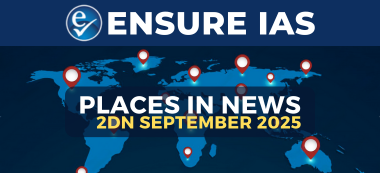- In January 2025, Indonesia has officially joined the BRICS group as the 10th member, marking a new chapter in the evolution of this global coalition of emerging economies.
What is BRICS?
Origin and Evolution
- The term BRIC was 1st coined in 2001 by economist Jim O’Neill to represent Brazil, Russia, India, and China, four rapidly growing economies.
- BRIC transformed into BRICS in 2010 when South Africa joined the bloc.
- Over the years, BRICS has grown to include additional members, reflecting its evolving nature and increasing geopolitical influence.
Recent Expansion
- In 2023, invitations were extended to six nations: Saudi Arabia, Iran, the UAE, Egypt, Ethiopia, and Argentina.
- By 2024, four of these—Egypt, Ethiopia, Iran, and the UAE—joined as permanent members.
- Indonesia became the 10th member of BRICS in 2025, after its presidential election and government formation.
- Argentina declined the invitation, while Saudi Arabia is yet to finalize its membership.
Objectives of BRICS
- Economic Growth: Enhance trade, investment, and infrastructure development among members.
- Global Governance Reform: Advocate for equitable representation in institutions like the United Nations (UN) and International Monetary Fund (IMF).
- Cultural Exchange: Foster people-to-people connections to strengthen cultural and social ties.
- South-South Cooperation: Serve as a platform for cooperation among developing nations.
Structure and Mechanisms of BRICS
- Flexible Framework: BRICS operates without a formal headquarters or secretariat, relying on consensus-based decision-making.
- Key Mechanisms:
- New Development Bank (NDB): Established in 2014, the NDB finances infrastructure and sustainable development projects in member countries.
- Contingent Reserve Arrangement (CRA): A $100 billion financial safety net to help member nations during balance of payments crises.
- BRICS Academic Forum: Promotes research and collaboration among universities in member states.
Economic and Strategic Significance
- Global Influence: BRICS+ represents over 45% of the world’s population and accounts for 35% of global GDP based on purchasing power parity.
- The bloc serves as a counterbalance to the G7, which includes the US, Canada, the UK, France, Germany, Italy, and Japan.
- Strengthening the Global South: BRICS advocates for fair trade, climate justice, and technology access.
- It aims to empower developing nations and challenge the dominance of Western-led global financial systems.
- Financial Independence: Members are working to reduce reliance on the US dollar in international trade, exploring local currency transactions like India-UAE trades in rupees and dirhams.
- A common BRICS currency is under consideration to further reshape global trade dynamics.
- Technology Sharing: Members collaborate on digital payments and renewable energy, such as India’s UPI and China’s Cross-Border Payment Systems.
Indonesia’s Entry into BRICS
Significance for Indonesia:
- Indonesia, the world’s 4th most populous country, strengthens BRICS’ representation in Southeast Asia.
- It brings a robust economy with extensive trade networks, bolstering the bloc’s negotiating power.
- Indonesia’s Foreign Ministry described its membership as a strategic move to enhance collaboration with other developing nations.
Strategic Developments:
- Indonesia’s membership was unanimously approved during the 2023 BRICS Summit in Johannesburg, South Africa.
- The finalization came in 2025 after Indonesia’s presidential election, which brought President Prabowo Subianto into office.
Challenges Faced by BRICS
- Diverse Interests: Member states have differing economic and geopolitical priorities, such as India’s ties with the US and Russia-China’s anti-West stance.
- New members like Iran and the UAE add to the ideological diversity, complicating consensus-building.
- Lack of Institutional Framework: The absence of a formal treaty, headquarters, or enforcement mechanism hinders coordination and policy implementation.
- Economic Sanctions and Internal Challenges: Members like Russia face Western sanctions, limiting cooperation.
- Domestic economic issues in nations like Brazil and South Africa divert attention from regional collaboration.
Recent Developments and Future Outlook
- Recent Summits: The 16th BRICS Summit in Kazan, Russia, in 2024 emphasized strengthening local currencies and promoting non-dollar transactions.
- The bloc is exploring the potential launch of a common currency, drawing attention from global powers like the US.
- Looking Ahead: Indonesia’s inclusion is expected to deepen engagement among emerging economies, fostering trade, investment, and policy alignment.
- As BRICS expands, it seeks to redefine global governance and strengthen the voice of the Global South in international affairs.
Conclusion
Indonesia’s membership marks a pivotal moment in BRICS’ journey toward creating a multipolar world. While challenges remain, such as internal diversity and external pressures, the bloc’s emphasis on cooperation, financial independence, and global reform positions it as a powerful advocate for developing nations. The addition of Indonesia not only enhances BRICS’ economic and geopolitical clout but also reinforces its commitment to championing the interests of the Global South in a rapidly changing global order.




